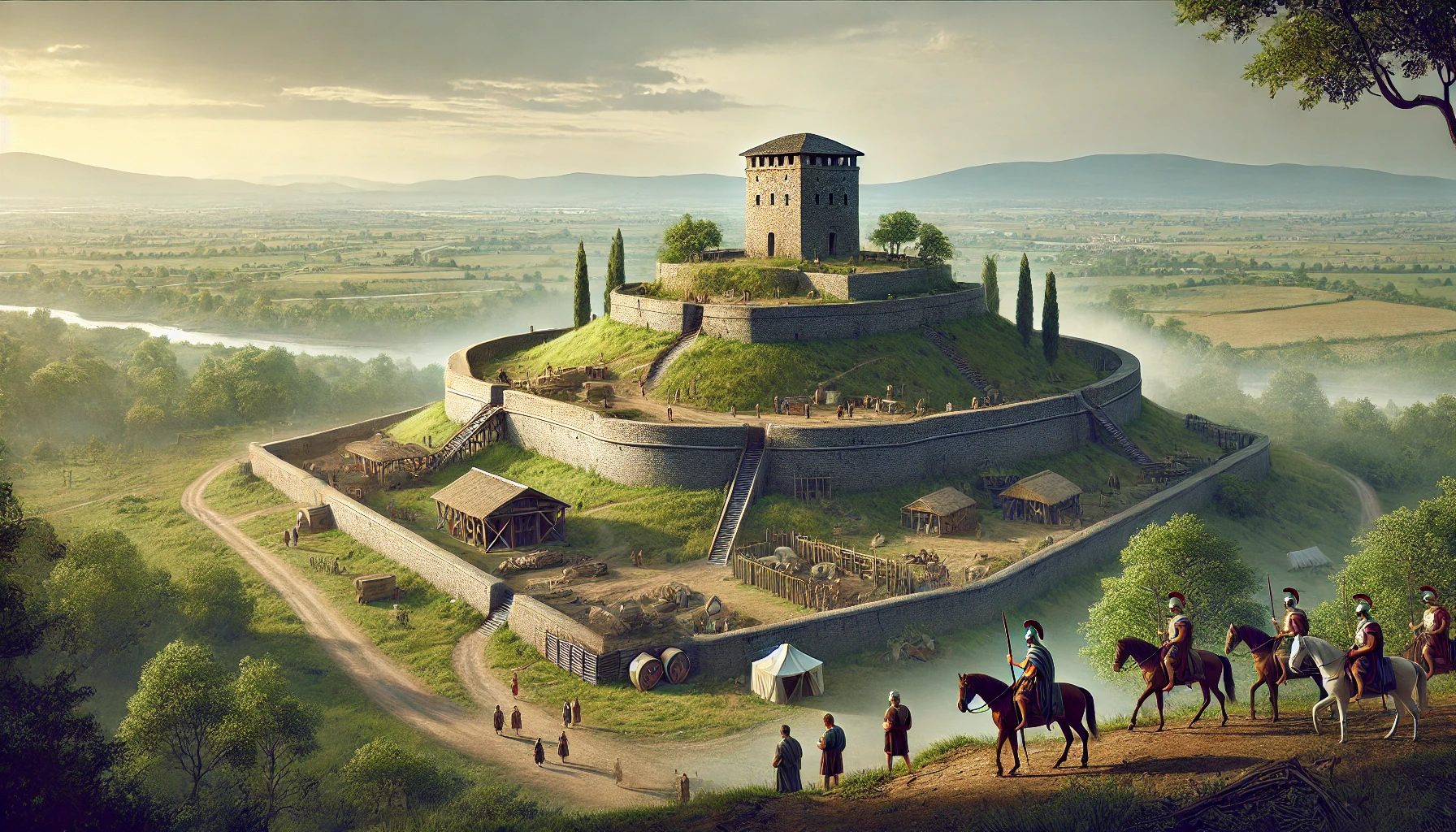The area known today as Dane John Park in Canterbury, Kent, has a rich and diverse history that spans from ancient Roman times to the present day. Originally known as “The Dungeon,” the site has evolved significantly over the centuries, reflecting the various cultural and historical influences that have shaped Canterbury.
Roman Beginnings
The history of Dane John Park begins with the Romans, who established the town of Durovernum Cantiacorum (modern-day Canterbury) as a strategic and administrative center in the first century AD. The area that would become Dane John Park was likely part of this bustling Roman town. Archaeological evidence suggests that the Romans built significant structures in this vicinity, including a cemetery and other civic buildings. The Roman influence laid the groundwork for the site’s later development, with their characteristic urban planning and architectural styles evident in the remains found in and around the park.
Medieval Developments
Following the fall of the Roman Empire, Canterbury continued to be an important settlement throughout the Anglo-Saxon and Norman periods. By the medieval era, the area now known as Dane John was part of the city’s fortifications. The Normans constructed substantial defensive earthworks, including a mound that would later be incorporated into the park’s design. These earthworks served to protect the city from invasions and raids, a testament to Canterbury’s strategic importance during this period.
The Evolution of The Dungeon
The name “The Dungeon” itself is believed to derive from the Old French word “donjon,” meaning a fortified keep or tower. During the medieval period, the area may have included such a structure, which would have been integral to the city’s defenses. Over time, “The Dungeon” became synonymous with the mound and surrounding land, though it is not clear if an actual dungeon, in the modern sense of the word, ever existed there.
Tudor and Stuart Periods
In the Tudor and Stuart periods, the area saw significant changes as the city’s needs evolved. The fortifications were maintained and updated to reflect new military technologies and strategies. The site’s association with various notable families, such as the Hales, added to its historical significance. However, the focus remained largely on its defensive utility and its role within the broader landscape of Canterbury.
Transformation into Dane John Gardens
The transformation from “The Dungeon” to Dane John Gardens began in the late 18th century. Alderman James Simmons, a prominent local figure, acquired the land and initiated its conversion into a public park. His vision was to create a space for recreation and relaxation for the citizens of Canterbury. The project included landscaping the ancient mound, adding pathways, planting trees, and creating open spaces for public enjoyment. This marked the beginning of Dane John Gardens as a cherished public space.
Victorian and Modern Developments
During the Victorian era, Dane John Gardens underwent further enhancements. The addition of ornamental gardens, fountains, and statues transformed the area into a quintessential Victorian park. A notable feature is the monument erected in honor of Alderman Simmons, recognizing his contributions to the city’s civic life and the creation of the park. The Victorian enhancements emphasized the aesthetic and recreational value of the space, making it a popular destination for residents and visitors alike.
In the 20th and 21st centuries, Dane John Park has continued to evolve. Modern amenities such as a bandstand, children’s play areas, and updated landscaping have ensured that the park remains a vital part of Canterbury’s community life. Events, festivals, and public gatherings frequently take place in the park, reflecting its enduring importance as a communal space.
Dane John Park Today
Today, Dane John Park stands as a testament to the rich history of Canterbury. It seamlessly blends the ancient with the modern, offering a serene and beautiful space that honors its historical roots while serving the needs of contemporary society. The park’s pathways invite leisurely strolls, the grassy areas are perfect for picnics, and the panoramic views from the top of the mound offer a unique perspective on the city.
In conclusion, the history of Dane John Park is a microcosm of Canterbury’s broader historical narrative. From its Roman beginnings to its medieval fortifications, Tudor transformations, and modern-day public space, the park encapsulates the dynamic changes that have shaped this historic city. Dane John Park is more than just a green space; it is a living history book, chronicling the story of Canterbury across the ages.
